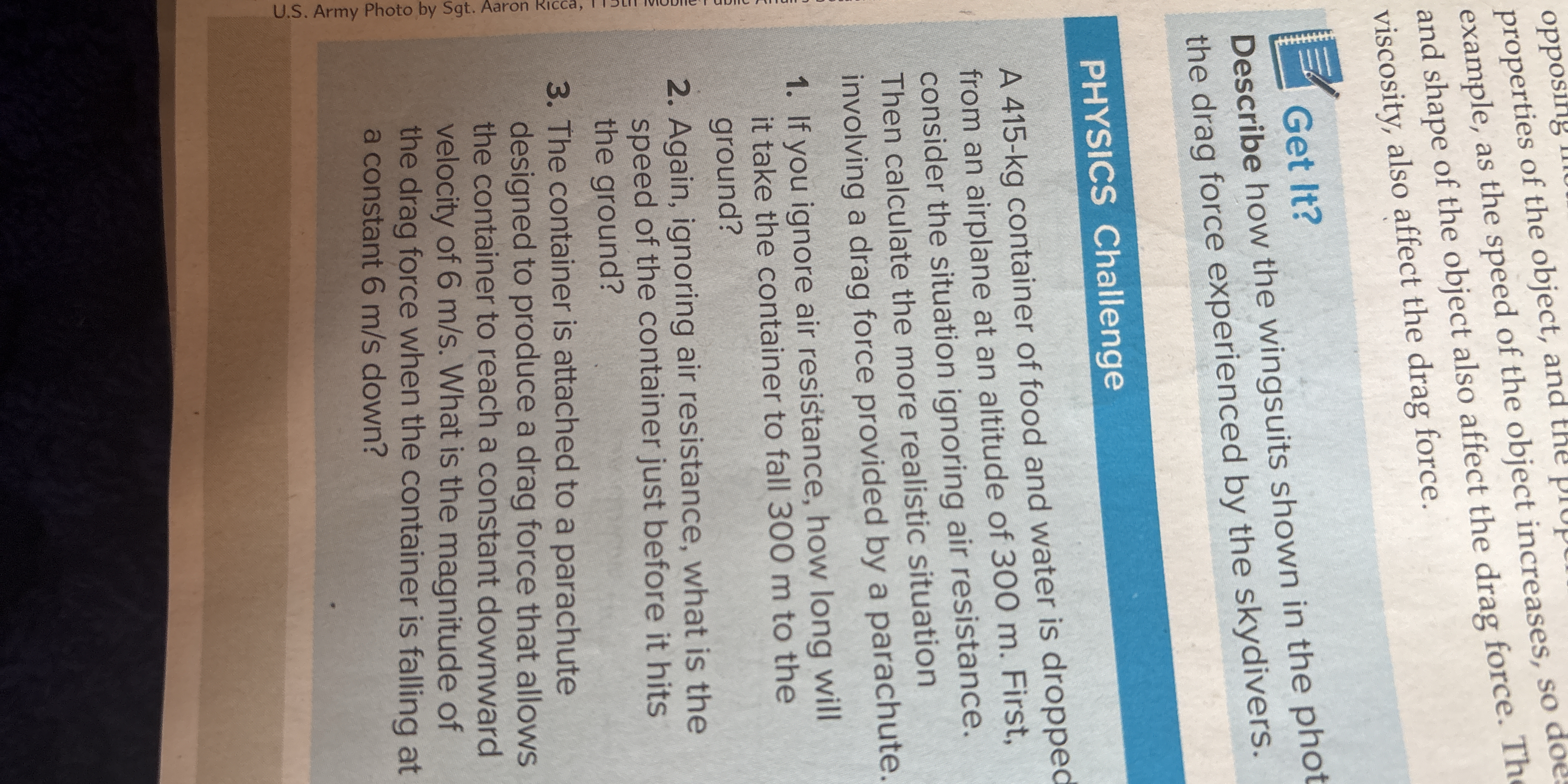A 415-kg container of food and water is dropped from an airplane at an altitude of 300 m. First, consider the situation ignoring air resistance. What is the magnitude of the veloci... A 415-kg container of food and water is dropped from an airplane at an altitude of 300 m. First, consider the situation ignoring air resistance. What is the magnitude of the velocity when the container reaches a constant downward velocity of 6 m/s? Second, if you ignore air resistance, how long will the container take to fall 300 m to the ground? Finally, if you consider air resistance, what is the drag force experienced by the container just before it hits the ground?

Understand the Problem
The question poses a physics challenge involving a container of food and water being dropped from an altitude. It requires calculations related to the effects of gravity and air resistance on its fall. The user needs to determine the time it takes for the container to fall a specific distance, with and without considering air resistance.
Answer
Ignoring air resistance: approximately $7.0$ seconds; considering air resistance: $50$ seconds.
Answer for screen readers
- Time ignoring air resistance: approximately $7.0$ seconds.
- Time considering air resistance: $50$ seconds.
Steps to Solve
- Calculate Time Ignoring Air Resistance
Using the formula for free fall, where the only force acting is gravity:
$$ d = \frac{1}{2} g t^2 $$
Where:
- ( d = 300 ) m (distance)
- ( g = 9.81 , \text{m/s}^2 ) (acceleration due to gravity)
Rearranging to solve for ( t ):
$$ t^2 = \frac{2d}{g} $$
Substituting the values:
$$ t^2 = \frac{2 \times 300}{9.81} $$
- Calculate Time with Air Resistance
For the second part of the problem, when considering air resistance, if we assume the container reaches a terminal velocity of $6 , \text{m/s}$, we can use the following formula:
$$ t = \frac{d}{v} $$
Where:
- ( d = 300 ) m
- ( v = 6 , \text{m/s} )
So, substituting the values:
$$ t = \frac{300}{6} $$
- Time ignoring air resistance: approximately $7.0$ seconds.
- Time considering air resistance: $50$ seconds.
More Information
The time calculated ignoring air resistance is based solely on gravitational acceleration, while the time considering air resistance accounts for the deceleration effect of reaching terminal velocity. Understanding the difference between these scenarios is crucial in physics.
Tips
- Confusing distance with time or using incorrect formulas. Always ensure clarity on which variables you are using.
- Forgetting to use the correct unit of measurement, which can lead to incorrect conversions.
AI-generated content may contain errors. Please verify critical information